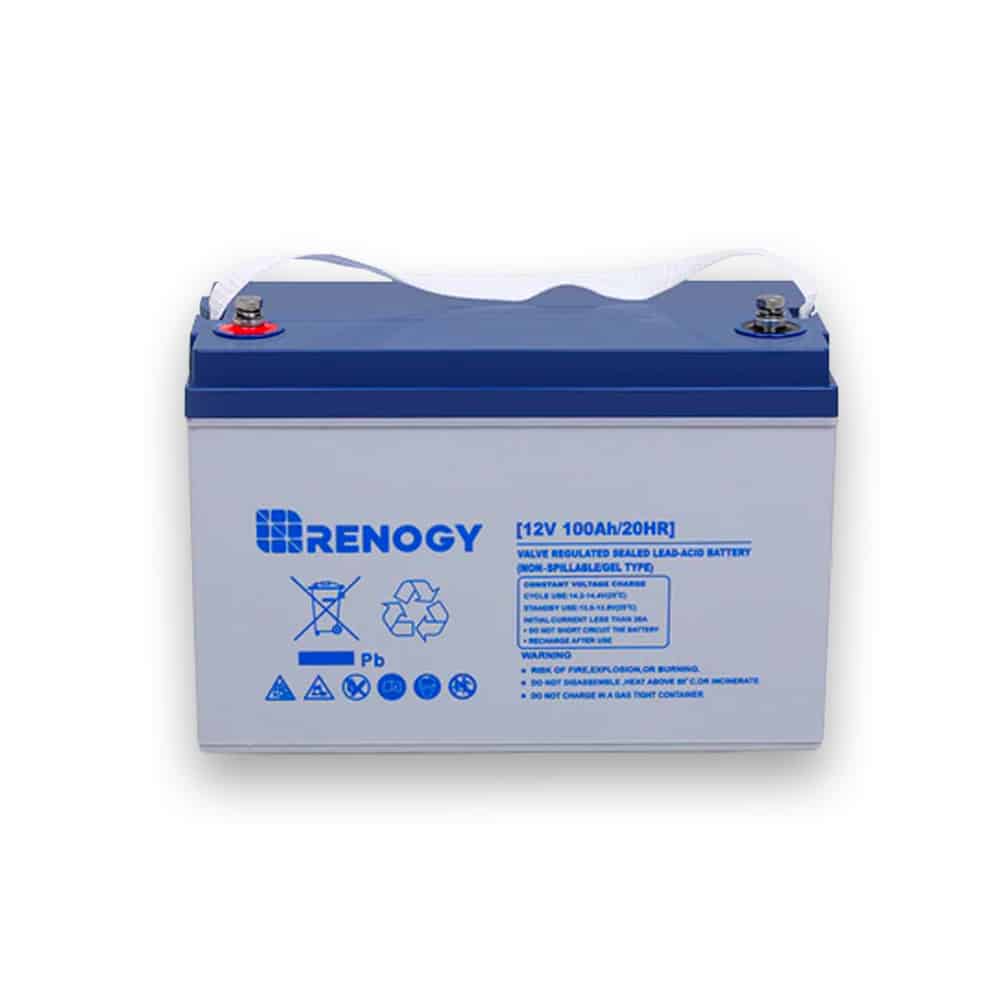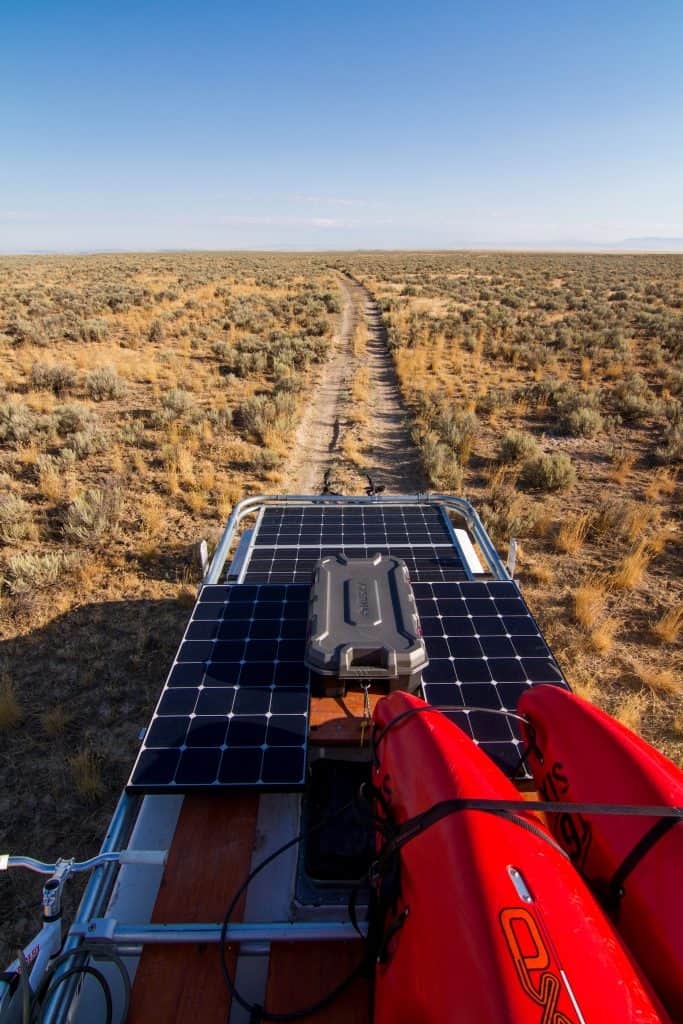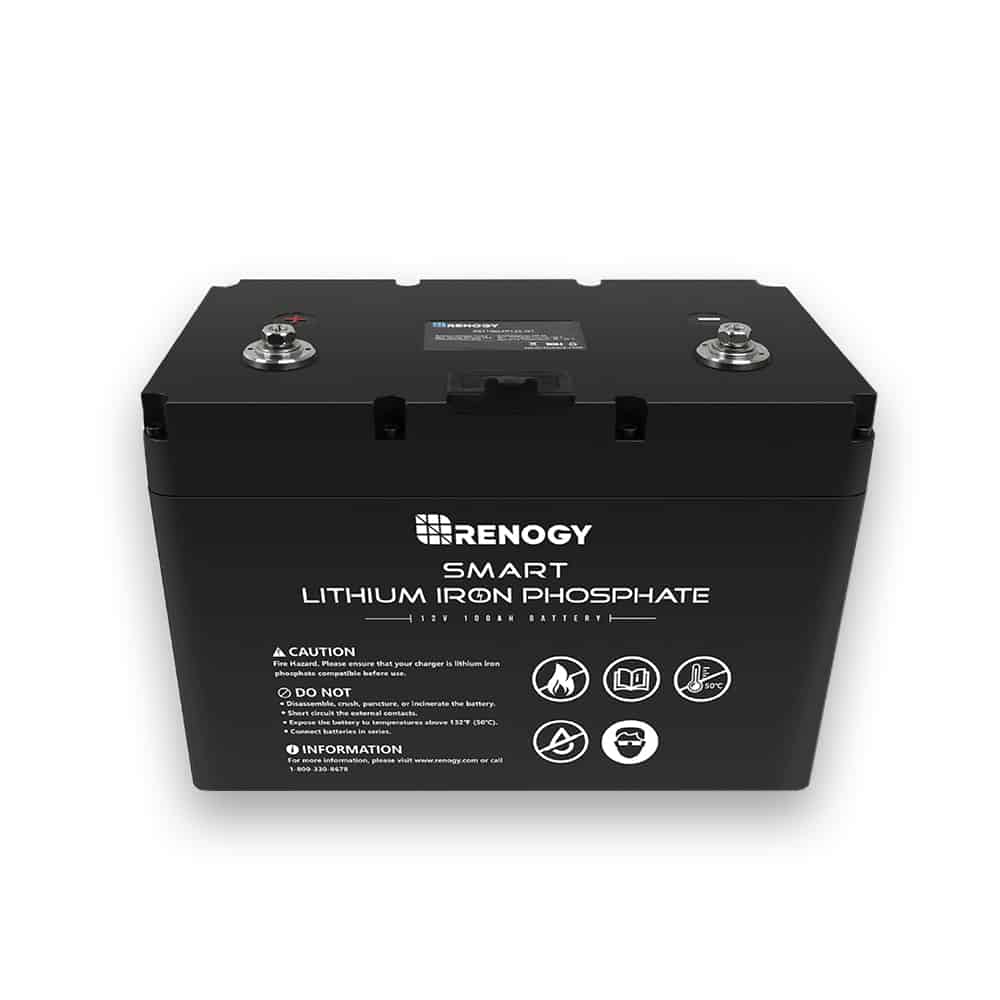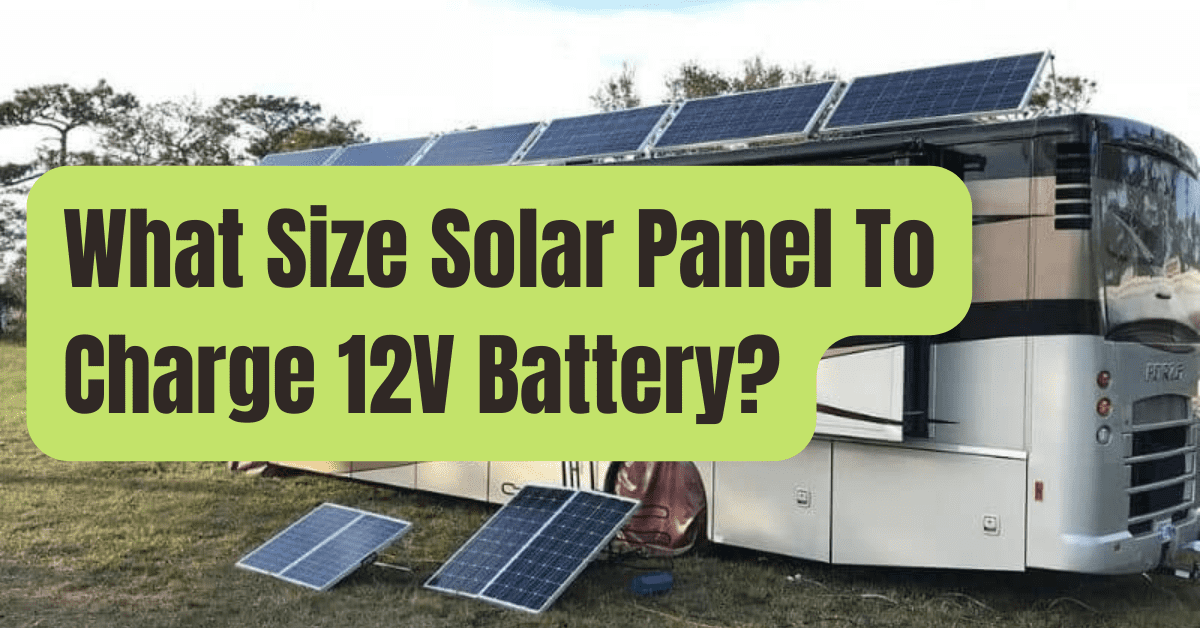How To Use 6 Volt Batteries In Your Solar Installation: What You Need To Know
Solar energy combined with battery storage is a fantastic solution to cover your energy demands if you are in an RV, camper, or cottage.
After choosing your solar panel system, you’ll need to buy a battery to keep the energy generated by your panels in reserve.
But how do you know the battery will provide you with the necessary electricity, and how do you know that the solar panel will efficiently charge that battery? Let’s dissect it.

Deep Cycle Batteries: What Are They?
Although deep cycle batteries and the ones used in cars may seem to be identical, they are really extremely different.
Deep cycle batteries are designed to offer continuous energy over a longer length of time, as opposed to vehicle batteries, which only produce brief bursts of energy.
Deep cycle batteries can be drained up to 80%, however the majority of manufacturers advise against going below 45%.
Regularly exceeding that limit will reduce the battery’s lifespan.
How Do Solar Panels Work To Charge Batteries?
Can solar batteries be charged without a charge controller? The solution is apparent and necessary: solar panels with batteries need a charge regulator to regulate the batteries’ charge and to keep them in good condition.
The energy that is gathered from your solar panels is stored in solar batteries.
The more solar energy your battery can store, the better its capacity.
You need solar panels, a charge controller, and an inverter to utilize batteries as part of your solar system.
In a residential solar system that includes batteries for solar panels, you may store extra power generated by the panels rather of feeding it back into the grid.
If your batteries are completely charged and your solar panels are still generating electricity, electricity will be transmitted to the grid.
To avoid overcharging, your solar panels must first be linked to a charge controller, which will monitor the amount of energy stored in the batteries.
If the batteries are too low, charge controllers will also turn off a system.
Your batteries must be linked to an inverter in order to convert the DC energy gathered from solar panels and converted to AC energy before powering your appliances.
Who Defines Amp Hours?
A specified amp hour rating applies to deep cycle batteries.
The quantity of current provided from the battery during a certain time period is what is meant by this.
A 200ah battery has a capacity of 20 continuous amps for 10 hours or 10 continuous amps for more than 20 hours.
What Amount Of Amps Can A 100 Watt Panel Generate?
By dividing power in watts by voltage in volts, you may get the current in amps.
The 100W rating on a 12V solar panel refers to the instantaneous voltage.
Therefore, when you measure the output, the voltage will be close to 18 volts provided all of the test requirements are satisfied.
Amperage will equal 5.5 amps (100 watts divided by 18 volts), as watts equal volts times amps. 5.5 amps will be produced by your panel each hour.
How Many Solar Panels Are Required To Fully Charge A 200Ah Battery?
Due to depletion restrictions, only 80% of a 200ah battery is useable, leaving you with just 160 amp-hours of available energy.
If you find out that battery normally provides energy for two days, it implies you use 80 amp hours each day.
According to the figure from before, a 100 watt panel would typically generate 30 amp-hours each day (based on an average sunny day).
This implies that, on an ordinary day, you would need either three 100 watt solar panels or a 300 watt panel to properly recharge your battery.
How Long Will It Take A Battery To Charge?
The total charging time is affected by the weather, the battery’s condition, and its design.
A panel can normally charge a totally discharged battery in five to eight hours.
The overall charging time will vary based on the battery’s condition.
A solar panel may re-energize the cells of a battery within five to eight hours if the battery is completely discharged.
The pace of a panel’s charging may be affected by the sun’s location in the sky.
Summertime solar panels charge more quickly when sunshine is shining directly on them.
On overcast days, charging cycles are slower.

How Many Solar Panels Are Needed To Charge A Battery With A 100 Ah Capacity?
Again, we use the same calculation to get amps by dividing power in watts by voltage in volts.
A 100 amp-hour battery will take five hours to fully charge at 12 volts and 20 amps.
We advise utilizing a 300 watt solar panel or three 100 watt solar panels since 20 amps multiplied by 12 volts equals 240 watts.
What Are The Ideal Battery Charging Circumstances?
All of Renogy’s deep cycle batteries contain requirements for their regular operating temperature, storage temperature, and operational charge temperature.
The typical operating temperature for batteries is 77°F plus or minus 5.4°F.
The optimal working range for batteries is between 50°F and 85°F.
For every 15 to 20 degrees below 80 degrees Fahrenheit, batteries normally lose roughly 10% of their capacity.
Their internal chemistries decelerate, become more resistant, and have decreased capacity and charge uptake.
This transient decrease in capacity.
What Sort Of Battery Should I Use, Does It Matter?
Yes! Your solar installation’s performance may be significantly impacted by the choice of batteries.
Deep cycle batteries used in solar systems typically fall into one of three categories: sealed lead acid, flooded lead acid, or lithium iron phosphate batteries.
These batteries differ from one another in terms of cost, battery capacity, voltage, and cycle life.
Battery capacity, for instance, is significant since it gauges how much energy you can store.
You’ll need extra batteries to bear a heavier load if you need to run certain appliances for extended periods of time.
Total amp hours are used to calculate capacity.
To find out how many discharge and charge cycles a battery can withstand before the capacity falls below the advertised capacity, look into cycle life.
This is measured in a number of cycles and varies greatly across technologies.
Refer to our blog article for additional details on battery kinds and how to choose the right battery for your system.

Do Flooded Lead Acid Batteries Charge More Quickly Than Lithium Batteries?
Batteries made of lithium iron phosphate are more effective than those made of sealed and flooded lead acid.
They charge at a quicker pace as well.
This is so that they can be recharged considerably more quickly than flooded lead acid batteries since they can often tolerate a greater current.
Because they will overheat if you charge lead-acid batteries too rapidly, they have a restricted capacity for charge current.
In addition, when you get closer to full capacity, the charge pace becomes noticeably slower.
How Should My Battery Bank Be Sized, And Why Is It Crucial?
It’s crucial to size your deep cycle battery bank appropriately.
You require a certain quantity of battery storage depending on how much energy you use.
Kilowatt hours are used to monitor energy use.
For instance, if you use 500 watts for 8 hours each day, your energy consumption is 4 kWh.
For a typical four-person household, a battery capacity of 4 to 8 kWh is generally suitable.
Depending on what you’re powering in your home, your energy demands may be quite different from those.
We advise generating a list of all the devices you want to operate in order to size a system that will best suit your requirements.
Obtain the product’s wattage information, as well as its amps and volts, and then provide the average run time for each item.
The Renogy solar panel calculator is a fantastic tool that makes it simple and fast to assess your unique requirements.
Battery Power
The size of your solar panels for charging a 12 volt battery relies on a number of variables.
Before sizing your solar panels to meet your demands, you must take into account your battery capacity and anticipated discharge rate.
Once these two things are known, you can figure out how big of a solar panel you’ll need to charge your 12 volt battery.
On the specification documents for your battery or displayed on the exterior of your equipment, your 12v battery capacity should be indicated.
Capacity is often stated in amp-hours (Ah).
The amount of power that can be produced by a battery with a 100Ah capacity is either 100 amps for one hour or 10 amps for ten hours.
Calculations may be necessary to establish the overall capacity and voltage of your battery bank if many batteries are operating in a system.
If many battery banks are connected in parallel, you may simply sum their individual Ah ratings to obtain the overall capacity while maintaining the same voltage.
For instance, if three 100Ah 12v batteries were connected in parallel, their combined capacity would be 300Ah at 12 volts.
If your batteries are connected in series, you are really averaging their voltages while maintaining a constant capacity.
A battery bank with a 100Ah capacity at 36 volts would be created in the same example with three 100Ah 12v batteries if they were linked in parallel.
Discharge Rate Assumed
If you want to use your batteries while they are charging, calculating your discharge rate is crucial.
You can make sure that your solar panels are strong enough to keep your appliances running and charge your battery banks by estimating their estimated power use if you have continuously working appliances like a refrigerator, air conditioner, or lights.
Power consumption is commonly measured in watts, exactly as the output power of a solar panel.
By converting amp-hours to watt-hours, you may be able to better understand how much power your battery can handle.
To calculate your capacity in watt-hours, multiply the amp hours by the voltage, in this case, 3600 watt-hours, using a 300Ah 12v battery system as an example (Wh).
This size battery bank has the capacity to power a 300 watt appliance for about 12 hours.
The draw of your appliances can be determined in a similar manner.
You can usually get a general idea of an appliance’s estimated power usage.
Look for an indication of wattage or a voltage and amperage rating on the charging block, the bottom or rear of the appliance, or the charging cable.
If the latter is supplied, multiply the voltage and amperage together to obtain the watts.
For instance, a 120-volt device using 3 amps would use 360 watts.
You may calculate your anticipated draw in a few steps after you know the power consumption ratings of your equipment.
- Refrigerator: 150 Watts x 4 Hours = 600 Wh
- Six LED Lights: 6 x 5 Watts x 6 Hours = 180Wh
- Air Conditioner: 1000 Watts x 2 Hours = 2000 Wh
- Total Expected Daily Discharge: 600+180+2000 = 2780Wh
With a predicted discharge rate of 2780Wh, we can now calculate the size of solar panels that will be required.
Your Solar Panels’ Size
We can figure out the amount of solar panels we need to keep our appliances running and completely charge our battery banks using our example of a 300Ah 12v battery (with a 3600Wh capacity) and an anticipated daily drain of 2780Wh.
You will need 2780Wh of electricity to run these devices independently.
Ideally, your solar panels will provide the system with more energy than is required to satisfy your day demands alone, enabling your batteries to fully charge for usage at night or during times of shadow.
You may completely charge your 12v batteries from empty while using all of your appliances if you multiply your total battery capacity by your anticipated day consumption for a total of 6380Wh.
We can determine how much electricity the solar panels will need to produce using the estimated 6380Wh.
This estimate is rather simple since solar panels are sold by the watt, but there are several factors to take into account.
The major factor to take into account is the fact that solar panels don’t always function at their maximum efficiency.
As a result, assuming a 70 percent power output from each panel will give you a more realistic picture of how much electricity they can produce under normal conditions.
In a normal 12-hour day, we use the following computation to arrive at 6380Wh: 12 hours of typical daily sunshine divided by 6380Wh (the amount of intended energy output) equals 531.67 Watts.
To achieve our energy targets in this scenario, the solar panels must output 532 watts each hour for 12 hours.
We may compute the following further using our prior estimate of a power output of 70%: 531.67 Watts / 0.7 = 759.52 Watts.
We can now calculate the size of the solar power system that would be required to adequately supply our 12v battery system while taking daily use into account.
Solar Panels And 12-volt Battery Systems Combined
If a single solar panel is insufficient to provide your energy requirements, you may combine many panels to produce the required watts.
To reach the needed output of 759.52 watts for our aforementioned example, you could either combine two 400 watt panels or four 200 watt solar panels to create an 800-watt system.
In order to choose the right solar charge controller, you must take into account the total output voltage and amperage when connecting solar panels in parallel or series.
When solar panels are connected in series, the overall system voltage equals the sum of the voltages of each individual panel, but the amperage stays constant.
While the voltage is constant in parallel, the total amperage is equal to the sum of each panel’s amperage.
Conclusion
When you first begin looking through the available solar and battery alternatives, it might be frightening.
There is undoubtedly a lot to think about, from separating amp hours from volts to sealed lead acid from flooded lead acid.
However, by using some basic arithmetic, accurately estimating your energy requirements, and understanding a little bit about the many battery alternatives accessible to you, you’ll be well on your way to finding a battery bank that will meet the demands of you and your family.










